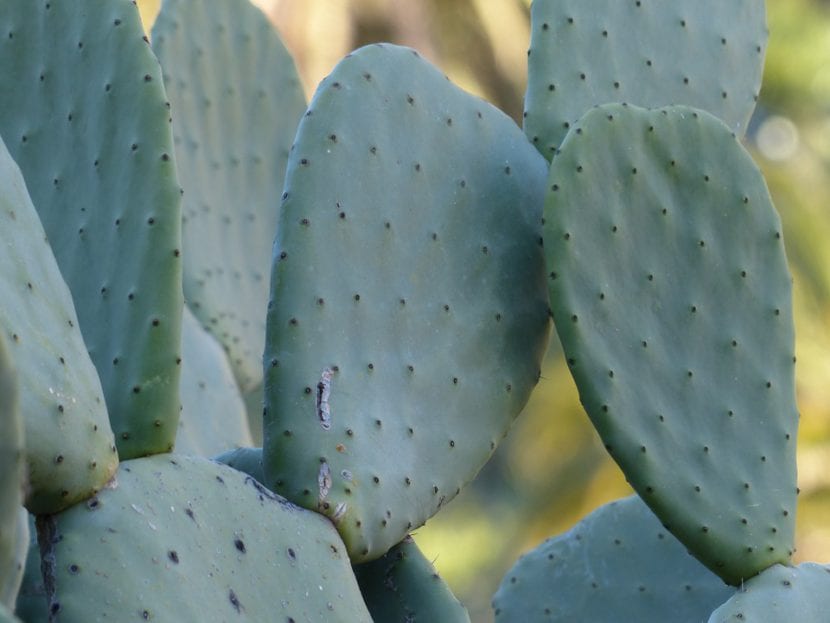
If there a genus of cactus really resistant to drought, which also has very brightly colored flowers and whose fruits are delicious, that is the one of the Opuntia. These cacti plants are the only ones of the family that it is enough that you rub them so that you notice how a few thorns less than 1cm in length have stuck in you, but apart from this small inconvenience, They are very ornamental cacti that do not need much care. For all this, they are cacti that are not usually lacking in collections or in gardens located in areas where rainfall is scarce.
In this special I'm going to show you the main species of Opuntia, and towards the end I will give you a few tips for growing it both in pots and in the garden. Do not miss it.
Main species
Opuntia ficus indica
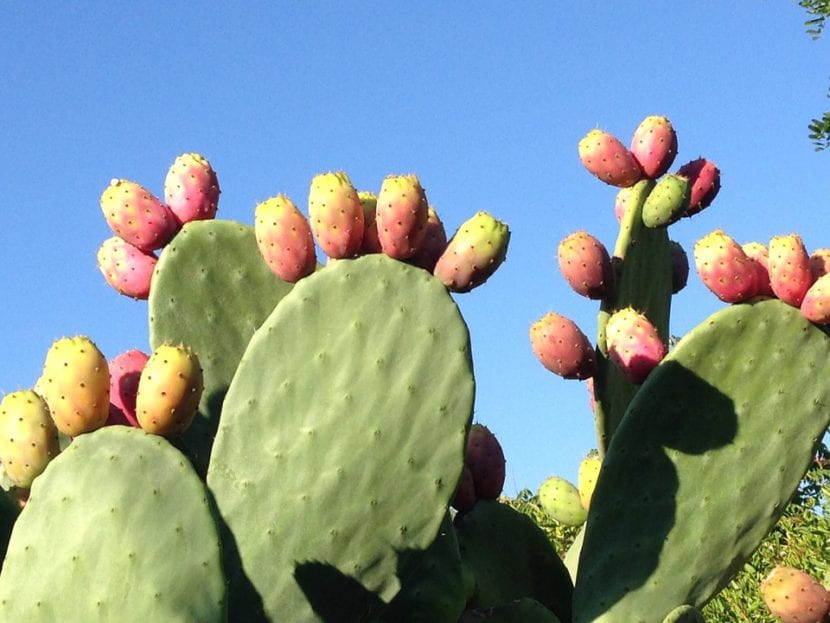
La O. ficus indica, u opuntia maxima also known as palera, nopal, tuna, higochumbo, prickly pear and many other names It is mainly native to Mexico, but it is found throughout America (both North and South). Today it has also managed to become naturalized in the Mediterranean, to the point of becoming a plague. It has a bushy shape, growing up to just over 3m high, with the segments - the "leaves" of these cacti - up to 15cm long by 5-6cm wide, green. They have two kinds of spines: some longer that protrude from the center of each areola, and others shorter and thinner. The flowers can be yellow, red or orange, up to 5cm in diameter. The fruit are called prickly pears, which is why it is known by the name of prickly pear or palera.
opuntia littoralis
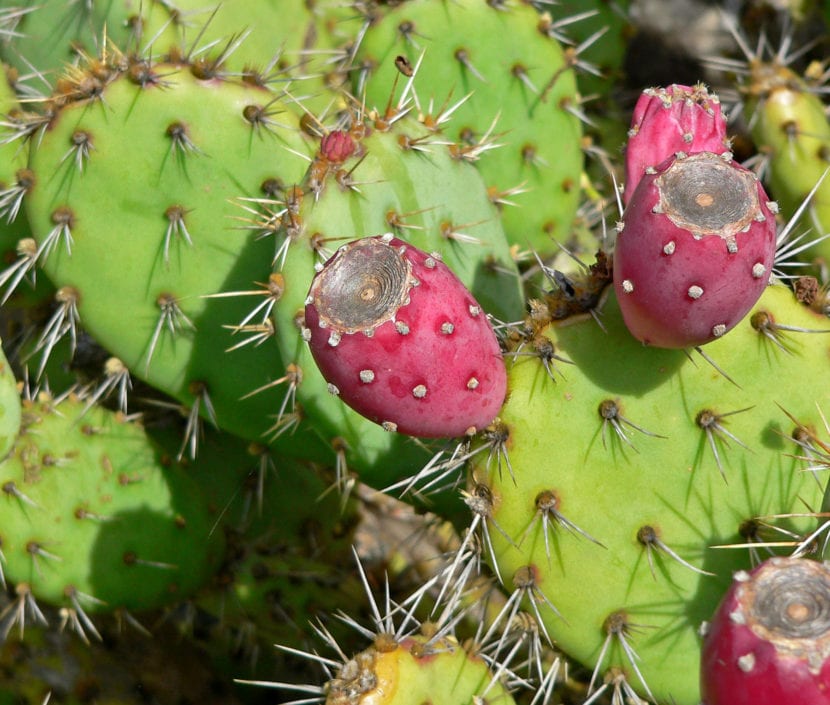
La O. littoralis It is native to Mexico and California. It grows up to a height of 1m, with segments up to 30cm long by 10cm wide. Up to 11 spines emerge from the areolas, of which the longest can measure 1cm. Its flowers are yellow with a red base, and can measure 7,5cm in diameter.
Opuntia microdasys
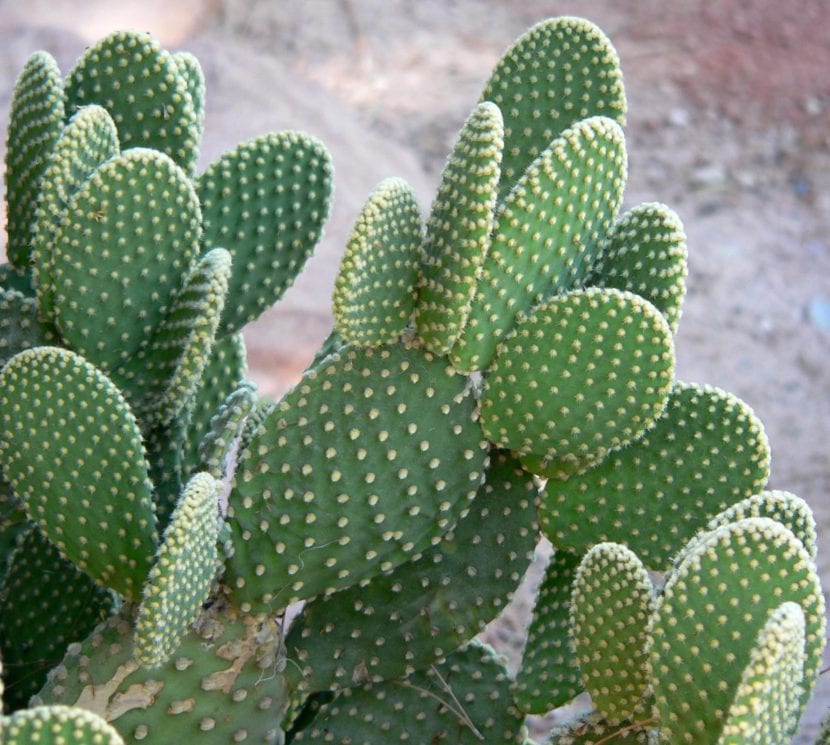
La O.microdasys it is a cactus native to central Mexico. It grows as a shrub up to 1m high, highly branched. The segments are about 10cm long by 5-6cm wide. The areolas are very close to each other, unlike other species; from each of them several small and fine thorns arise. The flowers are 4cm in diameter, and are yellow in color.
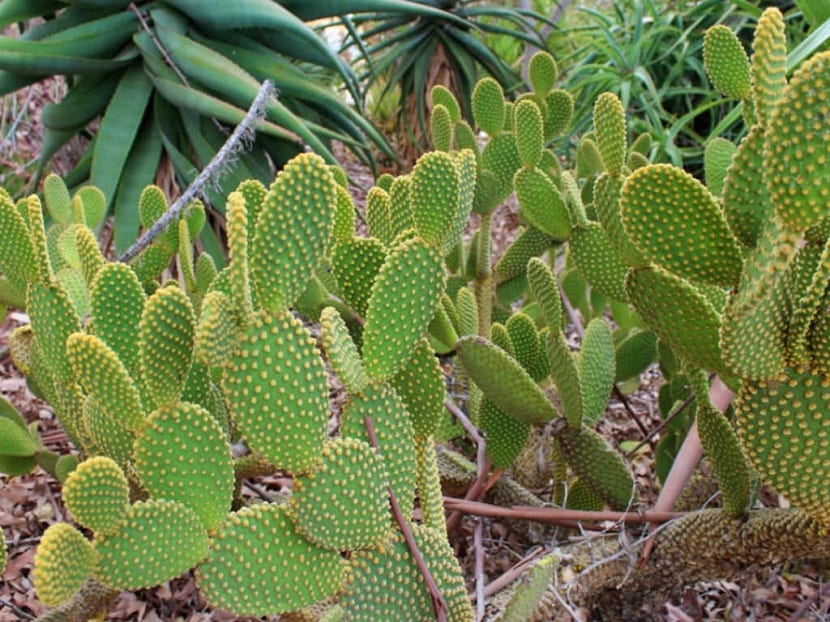
opuntia monacantha
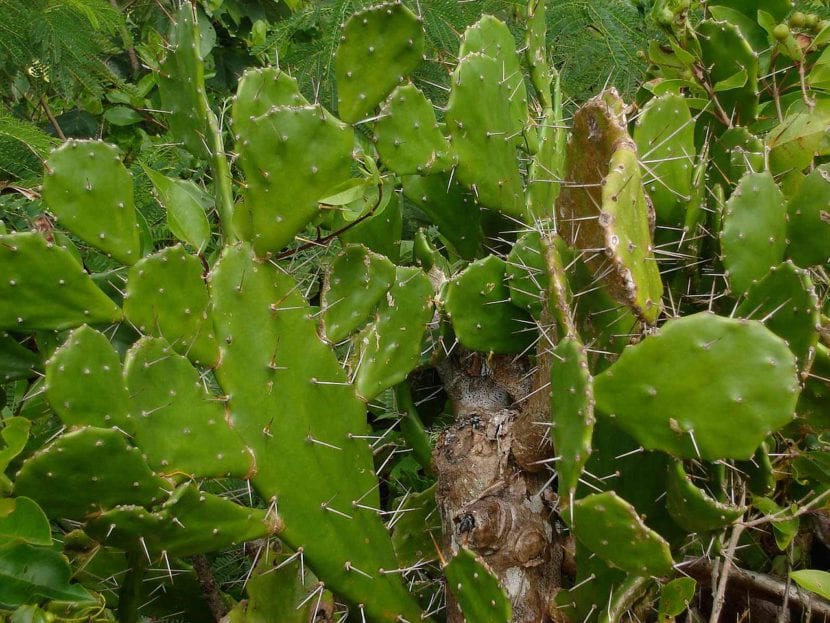
La O. monacantha It is one of the highest of the genre, measuring up to 6m tall. It is originally from South America, specifically from Brazil, Argentina, Paraguay and Uruguay. The segments are about 20-25cm long by about 10cm wide. One or two long whitish spines sprout from each areola. The flowers are yellow or red, and can measure 8cm in diameter.
opuntia ovata
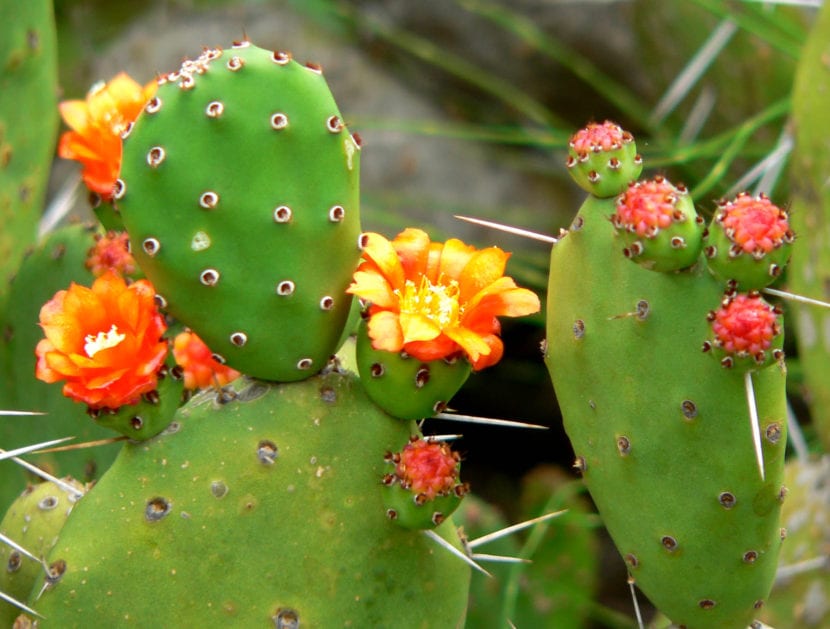
La o.ovata It is originally from Mexico. It can reach a height of 1m or 1,5m, with green cones. It has some long spines, 2cm in length, and other smaller and finer spines which emerge from the areolas. The flower is very pretty, yellow or orange.
opuntia tomentosa
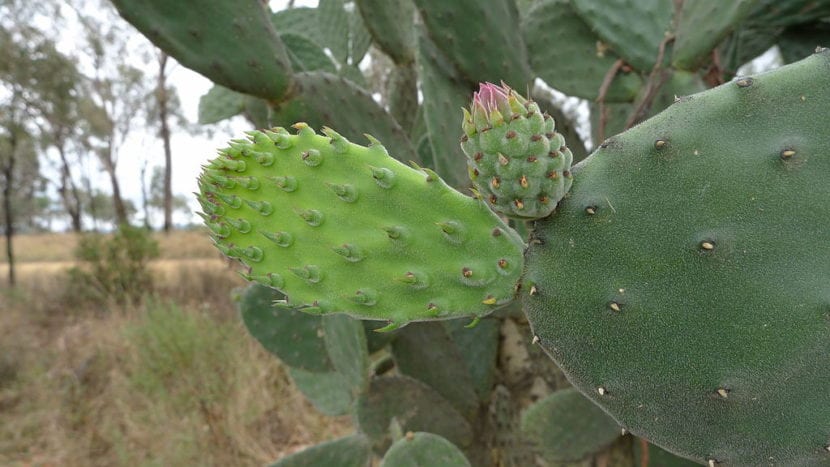
La O. tomentosa It is originally from Mexico. It has shrub growth up to 2m, although in habitat it can reach 8m in height. The segments are up to 30cm long by about 10cm wide, are dark green and are covered by a thin layer of white "hairs" that repel sunlight, thus preventing the plant from losing an excessive amount of water. Its spines, which sprout from the areolas, are very short, up to 1cm in length. The flowers are red, orange or yellow, up to 5cm in diameter.
Opuntia care
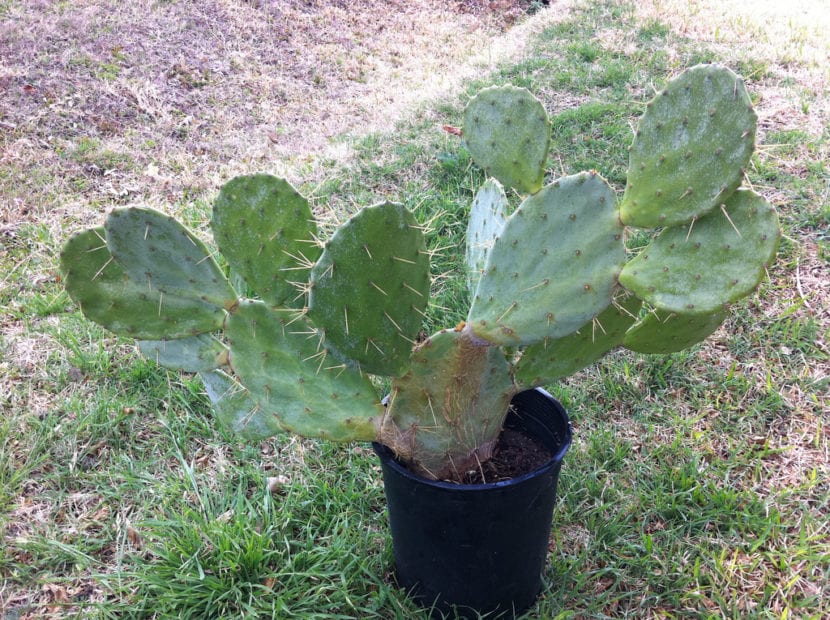
These plants are one of the best options when looking for plants capable of withstanding drought. Although, due to the size they can reach, it is more recommended to have them in the garden, we will also see how they are cared for in a pot.
In the garden
In order for you to have healthy Opuntias, it is necessary that they have enough space for them to grow, and above all, they must give it a lot of light, ideally throughout the day. They are very grateful, to the point that they can be planted in all types of soils, even calcareous ones, provided that during the first year they are watered once a week so that their root system adapts to the weather conditions.
Potted
If you want to have it in a pot, I recommend that you use a substrate that has good drainage, such as peat and perlite mixed in equal parts for example. It is also important that give it the sun directly, and that it be watered 2 times a week during the summer and every 10 days the rest of the year.
Another topic that we cannot forget is that of transplantation, which it has to be done every spring. Don't you know how to do it? Don't worry, we teach you:
- The first thing you have to do is put on some gloves (better if they are rubber).
- Next, and very carefully, place the cactus lying down on a flat surface.
- Now, grab it by the base of the pot, and tap both sides so that the cactus comes out.
- When half the root ball is out, you can remove the pot.
- Then you have to fill your new pot a bit -It must be about 5cm wider- with porous substrate.
- Take the cactus carefully by the root ball, and put it in its new pot.
- Finally, you have to finish filling it, and to water.
- And that's it! Place your cactus in a very bright area, and continue to water it every 10 days until summer arrives.
Plagues and diseases
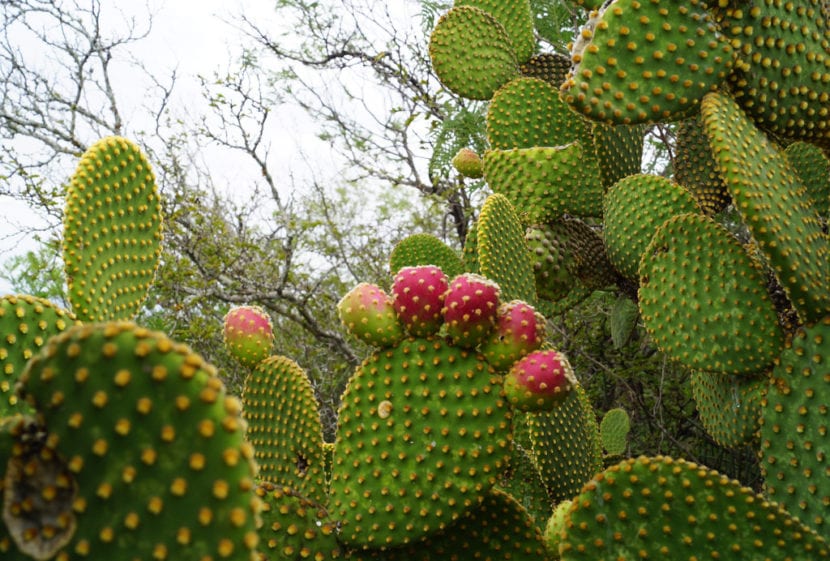
Although it is a very resistant plant, capable of naturalizing under the right conditions, sometimes a mistake in cultivation can cause it to be affected by mealybugs, especially those that are cottony, which can be treated with paraffin oil, or removed with a swab from the ears moistened with soap and water.
On the other hand, fungi Phytophthora They can seriously harm you if overwatered, causing the trunk to soften and rot, and make the plant look wilted. For this reason, it is very important to avoid overwatering, since unfortunately fungi are very difficult microorganisms to eradicate. In fact, and when we talk about cacti, what is usually done is to cut clean and plant it as a cutting in a pot with a very porous substrate (such as river sand) until it begins to grow.
And speaking of cuttings, how do these cacti reproduce?
Reproduction of Opuntia
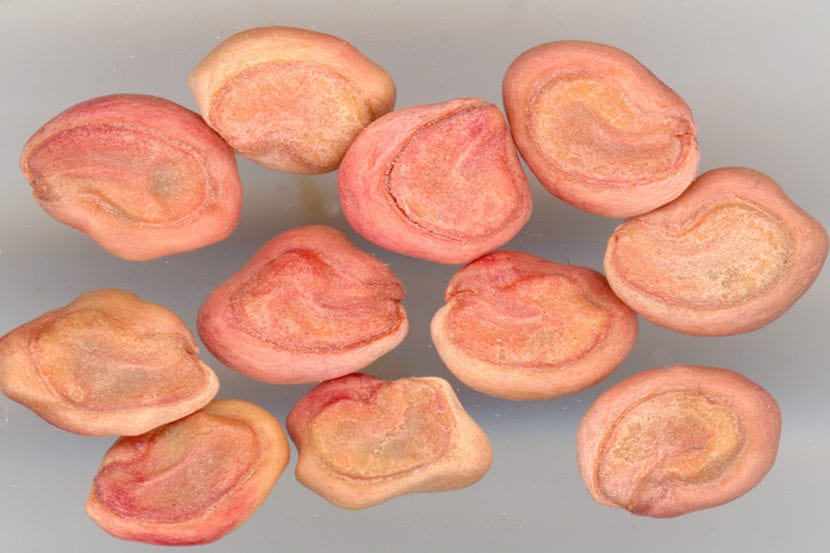
They can be reproduced by seeds in summer or, as we have seen, by cuttings. How to proceed in each case?
By seeds
The fruits of these cacti ripen towards the end of the summer, at which time we can take advantage of it to eat ... sorry, for extracting their seeds and sowing them 🙂, yes. The seeds are small, less than 2cm in diameter, light brown in color, and oval in shape. Once extracted, you have to clean them well, so you can put them in a colander, and put it under the tap so that the water takes care of leaving them pristine.
Then, you have to fill a pot no more than 20cm in diameter with porous substrate. Being an off-road cactus, it will be enough to mixs black peat with perlite in equal parts, and place a maximum of 5 seeds. Then it will only be a matter of watering, and placing the seedbed in an area where it is directly exposed to sunlight.
The first ones will germinate in a week or two.
By cuttings
These plants reproduce very easily by cuttings of "leaves" (segments). The ideal time for this is to mid spring, when temperatures start to rise. It is done as follows:
- With a hand saw, cut the segment that you like the most, from as close as you can to the stem or trunk.
- Then Fill a 20-30cm diameter pot (depending on how big the segment is) with river sand or similar substrate.
- Then plant the cutting right in the center.
- Water.
- Finally, place the pot in an area that is very well lit, but protected from direct sun.
It will start to root very soon, after 10-15 days.
Uses of Opuntia
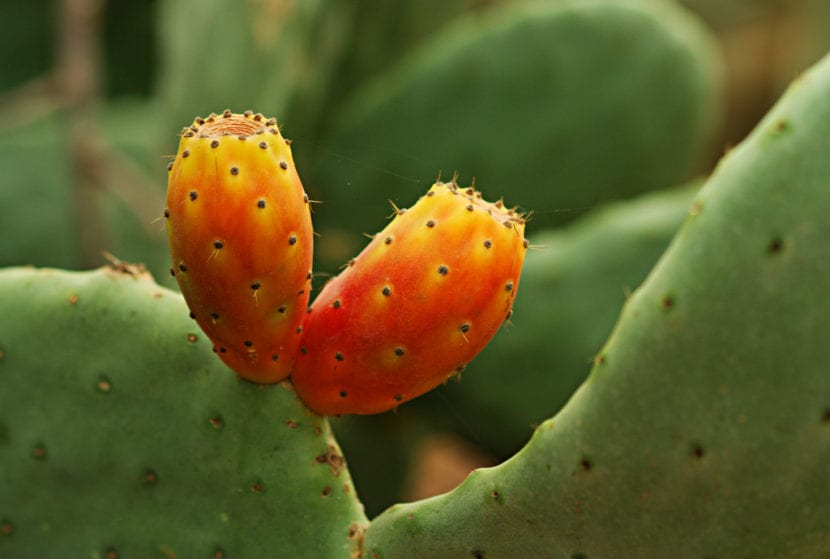
These cacti are used mainly as an ornamental and edible plant. Its fruits contain iron, phosphorus, potassium, vitamins, among others. It must also be said that in the south of Spain two segments of the O. ficus indica and a couple of sticks to create a car.
But it also has interesting medicinal properties. The segments once heated in the oven are used as emollients, as a poultice. Too it is used to improve digestion, for diarrhea and even for ulcers.
They are, as we can see, plants that, although it may seem otherwise, can be of great use to us. Not only in gardens, where they can be planted in "trouble spots", but also in the kitchen during the summer, or when we have some other health problem.
What did you think of this special Opuntia? You have someone?